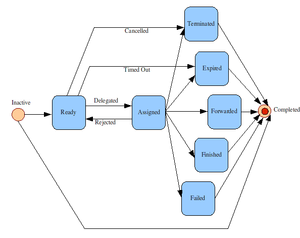
When Toyota arrived on the North American manufacturing scene, automakers were introduced to many of Toyota’s best practices including the Toyota Production System (TPS) and the well-known “Toyota Way”. Since that time, Toyota’s best practices have been introduced to numerous other industries and service providers with varying degrees of success.
In simple terms, Toyota’s elusive goal of single piece flow implicitly demands that parts be processed one piece at a time and only as required by the customer. The practice of batch processing was successfully challenged and proven to be inefficient as the practice inherently implies a certain degree of fragmentation of processes, higher inventories, longer lead times, and higher costs.
To the contrary, over specialization can lead to excessive process fragmentation and is evidenced by decreased efficiency, higher labour costs, and increased lead times. In other words, we must concern ourselves with assuring that we have optimized process tasks to the extent that maximum flow is achieved in the shortest amount of time.
An example of excessive specialization can be found in the healthcare system here in Ontario, Canada. Patients visit their family doctor only to be sent to a specialist who in turn prescribes a series of tests to be completed by yet another layer of “specialists”. To complicate matters even more, each of these specialized services are inconveniently separated geographically as well.
Excessive fragmentation can be found by conducting a thorough review of the entire process. The review must consider the time required to perform “real value added” tasks versus non-value added tasks as well as the time-lapse that may be incurred between tasks. Although individual “steps” may be performed efficiently and within seconds, minutes, or hours, having to wait several days, weeks, or even months between tasks clearly undermines the efficiency of the process as a whole.
In the case of healthcare, the time lapse between visits or “tasks” is borne by the patient and since the facilities are managed independently, wait times are inherently extended. Manufacturers suffer a similar fate where outside services are concerned. Localization of services is certainly worthy of consideration when attempting to reduce lead times and ultimately cost.
Computers use de-fragmentation software to “relocate” data in a manner that facilitates improved file storage and retrieval. If only we could “defrag” our processes in a similar way to improve our manufacturing and service industries. “Made In China” labels continue to appear on far too many items that could be manufactured here at home!
Until Next Time – Stay LEAN!
Vergence Analytics
[twitter-follow screen_name=’Versalytics’ show_count=’yes’]

